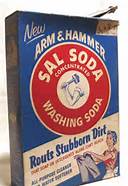So my dad used to homebrew back in the day, and now that I've started he's pulled out his old books, and even his notebook. All the books were published in the 70s, and it's no wonder all the horror stories people have often lead to no issues with their beer... It was pretty much par for the course back then.
All the books talk of using a plastic dustbin (or metal of that's all you have) for your primary... And yes, by dustbin, it's just a small garbage can with a normal lid on it. You'd rouse your yeast daily by stirring it, and you'd skim the krausen twice or three times daily, and take a gravity daily as well. I had to go through 4 books before finding out why they were skimming the krausen... Had to do with preventing it (and all the dead yeast in there) from falling back into the beer and causing it to be overly bitter.
Pitching at 80 or so was recommended, to get "a quick start", and you'd then let the temp drop by itself. Two books mentioned that breweries would pitch cold and let temps come up, but said it was too much of a hassle for the home brewer, and because of our scale, they wouldn't heat up anyway, but cool down over time.
Secondaries were obviously recommended, (proper ones with air locks even), but several books talked of using 5, 1-gallon glass containers as secondaries (though that might have been what was more readily available, and leads to more options of experimenting I guess). One book even gave you the option of racking your beer after 8 hours, or when your krausen was high for the first time, and putting it into anther fermentation vessel, then going to your secondary 5-6 days after that. The explanation was one sentence long, and involved getting it away from the dead yeast in the krausen I believe.
Oddly enough, despite taking daily gravity readings, the time to bottle is always listed in days, with recipes always listing a FG range.
All-grain is mentioned in the books, but several of them say it's too complicated to ever want to bother with. They all give recipes for extract as well, and in every one of them, sugar makes up 40-50% of the recipe, with dry malt extract being the rest in most, though some do recommend unhooked liquid ones.
All the books talk of using a plastic dustbin (or metal of that's all you have) for your primary... And yes, by dustbin, it's just a small garbage can with a normal lid on it. You'd rouse your yeast daily by stirring it, and you'd skim the krausen twice or three times daily, and take a gravity daily as well. I had to go through 4 books before finding out why they were skimming the krausen... Had to do with preventing it (and all the dead yeast in there) from falling back into the beer and causing it to be overly bitter.
Pitching at 80 or so was recommended, to get "a quick start", and you'd then let the temp drop by itself. Two books mentioned that breweries would pitch cold and let temps come up, but said it was too much of a hassle for the home brewer, and because of our scale, they wouldn't heat up anyway, but cool down over time.
Secondaries were obviously recommended, (proper ones with air locks even), but several books talked of using 5, 1-gallon glass containers as secondaries (though that might have been what was more readily available, and leads to more options of experimenting I guess). One book even gave you the option of racking your beer after 8 hours, or when your krausen was high for the first time, and putting it into anther fermentation vessel, then going to your secondary 5-6 days after that. The explanation was one sentence long, and involved getting it away from the dead yeast in the krausen I believe.
Oddly enough, despite taking daily gravity readings, the time to bottle is always listed in days, with recipes always listing a FG range.
All-grain is mentioned in the books, but several of them say it's too complicated to ever want to bother with. They all give recipes for extract as well, and in every one of them, sugar makes up 40-50% of the recipe, with dry malt extract being the rest in most, though some do recommend unhooked liquid ones.



